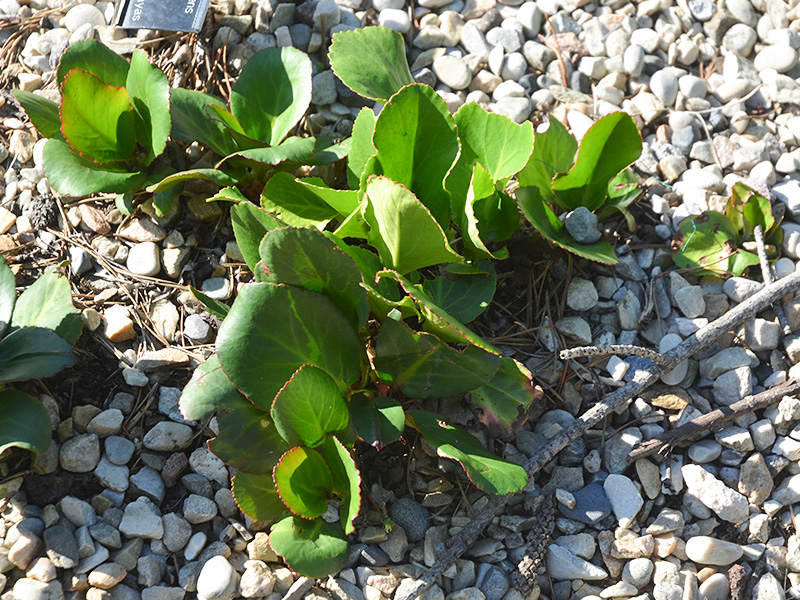
Perennials > Bergenia > Bergenia purparescens > Bergenia purparescens
Bergenia purparescens
Purple Bergenia
| Family |
| Saxifragaceae |
| Genus |
| Bergenia |
| Species |
| purparescens |
| Category |
| Perennials |
| Type |
| Shrub (evergreen) |
| Synonyms |
| Bergenia beesiana, Bergenia purpurascens |
| USDA Hardiness Zone |
| 5- 8 |
| Canadian Hardiness Zone |
| 6 |
| RHS Hardiness Zone |
| H5 |
| Temperature (°C) |
| -15 - (-10) |
| Height |
| 0.3 - 0.5 m |
| Spread |
| 0.3 - 0.5 m |
Photographs
Description and Growing Information
Flowering Period
| Landscape |
| Borders, beds, ground cover, cottage, informal and courtyard gardens. |
| Cultivation |
| Full sun and partial-shade. Moist, well-drained loam, chalk, sand and clay soils with acid, alkaline and neutral pH. Remove faded flower spikes. |
| Shape |
| Clump-forming. |
| Pests |
| Weevils, caterpillars, aphids, thrips, mealybugs, slugs and snails. Leaf spot may also occur. Deer and rabbit resistant. |
| Leaf Description |
| The leaves are rounded, 40 cm in length, erect and oval-shapped. |
| Flower Description |
| Dense, erect clusters of bell-shaped flowers that bloom in spring. |
| Colour Description |
| The leaves are dark green becoming a beetroot-red in winter. The flowers are pinkish-white. The stems are red. |
| Texture Description |
| The leaves are leathery in texture. |
| Notable Specimens |
| The University of Alberta Botanic Garden, Devon, Alberta, Canada. |
| Propagation |
| Division and root rhizomes sections in autumn or spring. |

